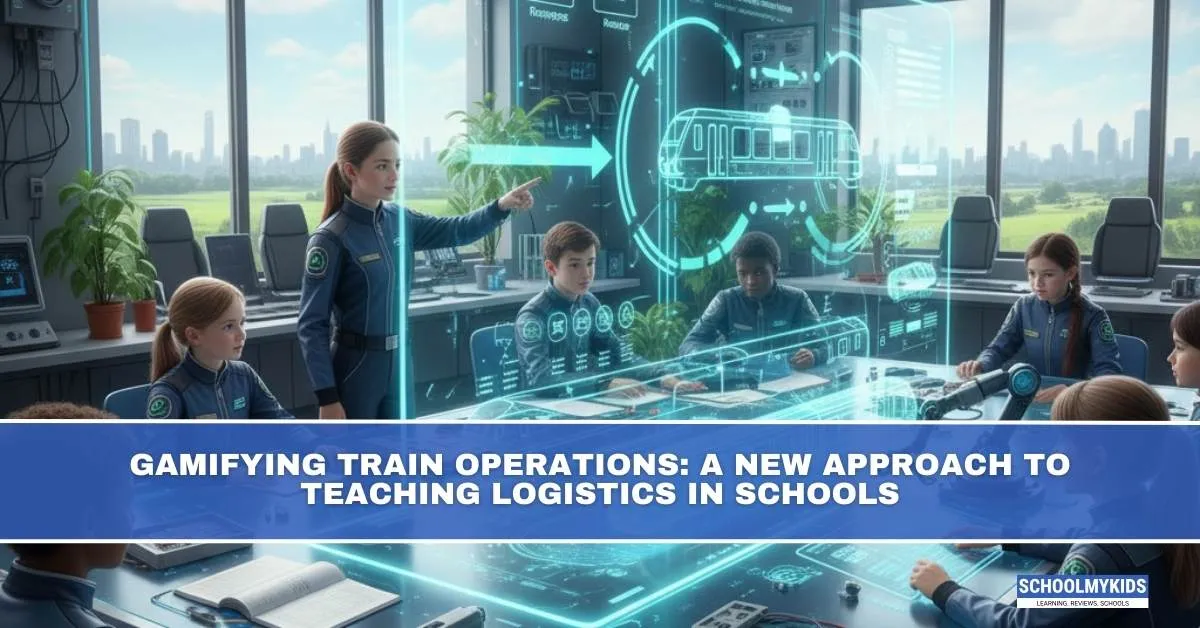Logistics is often seen as a complex, grown-up subject—something that belongs in warehouses, shipping yards, or railway control rooms. Yet logistics is everywhere, shaping how goods move, how cities breathe, and how people live. For schools, introducing logistics as a subject may sound ambitious, but with the right approach, it can be not only possible, but also exciting. One innovative method is gamifying train operations, where students learn about movement, supply chains, and coordination through playful, interactive simulations.
Why Logistics Matters for Students
Logistics isn’t just trucks and timetables; it’s a way of thinking. It involves problem-solving, decision-making, teamwork, and strategic planning. In a world where everything—from online shopping deliveries to sustainable city design—depends on efficient movement, students can benefit enormously from early exposure to logistics concepts. Teaching logistics in schools builds skills such as:
- Critical Thinking: Planning routes and resources.
- Collaboration: Working in teams to manage complex systems.
- Numeracy and Data Skills: Handling timetables, costs, and inventory counts.
- Environmental Awareness: Understanding how choices impact sustainability.
The Train as a Teaching Tool
Why use trains to teach logistics? Because railways are naturally built on logistics principles. They involve scheduling, routing, load management, and safety protocols. More importantly, trains are tangible and familiar to children. Unlike abstract supply chains, trains offer a visible, relatable way to understand logistics concepts.
A train journey can be transformed into a mini logistics lab where students act as station masters, conductors, cargo managers, and schedulers.
Gamification: Turning Operations Into Play
Gamification introduces competition, rewards, and problem-solving into the learning process. With train operations, gamification can be applied in multiple ways:
- Timetable Challenge: Students are given a set of trains, routes, and stations. Their task: create a timetable that avoids collisions, minimizes delays, and maximizes efficiency. Points are awarded for accuracy, speed, and passenger satisfaction.
- Cargo Coordination Game: Teams are assigned to move goods (represented by colored blocks or tokens) from one city to another using limited train capacity. They must prioritize urgent goods, optimize space, and ensure on-time delivery.
- Emergency Response Drill: Students handle real-world challenges: a train breakdown, sudden demand surge, or track closure. The team that adapts fastest while keeping the system running earns rewards.
- Digital Simulations and Apps: Using computer-based train simulators, students can experiment with logistics virtually, learning about scheduling algorithms, fuel efficiency, and traffic control in an immersive way.
Classroom Implementation
Schools can adapt train logistics gamification at different levels:
- Primary School: Use toy trains and colorful maps to teach basic movement, scheduling, and teamwork.
- Middle School: Introduce challenges involving resources, cargo types, and time management.
- High School: Incorporate digital simulations, mathematical optimization, and sustainability projects.
Teachers can link the activities to curriculum areas such as mathematics (time, speed, distance), geography (maps, routes), economics (cost management), and environmental science (carbon footprint).
Benefits of This Approach
- Engagement: Learning feels like play, which motivates students.
- Practical Skills: Students understand systems thinking, not just textbook facts.
- Career Inspiration: Logistics is a booming global industry, and early exposure may spark interest in future careers.
- 21st-Century Competence: Students gain transferable skills—problem-solving, adaptability, and data literacy—that are valuable in any profession.
Beyond the Classroom
Gamifying train operations doesn’t need to stop at school gates. Field trips to railway stations, logistics hubs, or even railway museums can deepen learning. Partnerships with railway companies or logistics firms can provide mentorship and real-world case studies. Students might even participate in national competitions where schools simulate city-wide logistics using rail systems.
Conclusion
Teaching logistics in schools might sound complicated, but through gamified train operations, it becomes hands-on, engaging, and relevant. By transforming classrooms into interactive railway control rooms, students not only learn about trains and timetables but also gain life-long problem-solving skills. As education evolves, it’s time we prepare young learners to understand the invisible systems that keep the world running—and gamifying logistics is a powerful way to do just that.








Be the first one to comment on this story.